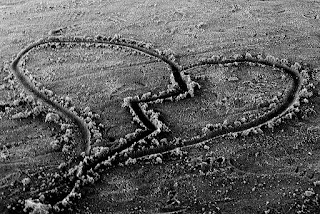"This Darkness Got to Give"
“[Officer Fred Eihl] spoke to Robin Van Heest and learned more about Mary and Greg from him. He looked for the others who were at the party and eventually interviewed Paul Harter, Chris Campbell, Jim Prew, and Cho (who stayed on the ‘Dead On’ bus.) (Berkeley Marina Murders, p. 137)
Up to this point, I've given readers the following:
- Court Documents
- Newspaper Clippings
- Timeline from June to August 1985
- Timeline for the night of August 15/16
- Summary of prosecution's case at trial
- Summary of Justice Mosk's dissent in People v. Thomas
Robbie Van Heest*
Jim Prew
Chris Campbell
Paul Harter
Mary
Greg
"Dan" [Adams]
Ralph Thomas
Paul Bergman
Tracy Scarborough
Vincent Johnson
Jong Cheol Cho
Lee Andersen
Claus Von Wendel
Thomas Medlin
Melody Medlin
Megan Barry
James Royster
Marie Marino
Vivian Cercy
Harry Shorman
Weston Sudduth
James Bowen
"Chaffee pointed out also that his star witness, Vivian Cercey's [sic] testimony was corroborated by a photo that showed two liquor bottles found in the Village dumpster, where she said she saw the murder victims argue with a 'blond man' that night. 'This photo is a marker of [her] honor, her veracity.'" (Berkeley Marina Murders, p. 162)
"Chaffee testified that he did not know how to contact anyone in the Grateful Dead community, nor was he aware that the band published an itinerary. However, Chaffee had a description, a nickname (“Bo”), and the resources of the Alameda County Public Defender's investigations unit at his disposal. The office's chief investigator at the time, Thomas Rauch, testified that he could and would have conducted a search with this information as a starting point. Though the Dead and their followers had left town by the time Chaffee was appointed, Chaffee had the license plate of the “Dead On” bus that had been parked in Rainbow Village the night of the murders and by checking its registration could have identified its owner, Deadhead Randy Turley, knew the Grateful Dead had come back to the Bay Area for one or more additional shows in the fall of 1985, presumably bringing with them itinerant Deadheads. Despite this, he never asked an investigator to conduct any search in the Grateful Dead community, nor did he ask anyone more familiar with that community how he might go about tracking down a Deadhead. A reasonable attorney in 1985, charged with representing a capital defendant [my emphasis], would have pursued what leads Chaffee had in the Grateful Dead community, the community from which the victims and Bo came." (In re: Ralph International Thomas, p. 9)
The majority argued that, among those listed in the police reports, an investigator could reasonably find only Claus von Wendel and Jong Cheol Cho, and with the license plate, Randy Turley. This suggests that they believed someone like Thomas Rausch couldn't have just read the reporting in the local newspapers and located Dan Adams. Like Justice Kennard, I find that difficult to believe.
So to end this post, here's a list of the Bay Area shows the Dead played in the fall of '85. Chaffee's team of investigators could have used this list to track down Deadheads:
09.10.85 - Henry J. Kaiser Convention Center, Oakland CA
09.11.85 - Henry J. Kaiser Convention Center, Oakland CA
09.12.85 - Henry J. Kaiser Convention Center, Oakland CA
11.20.85 - Henry J. Kaiser Convention Center, Oakland CA
11.21.85 - Henry J. Kaiser Convention Center, Oakland CA
11.22.85 - Henry J. Kaiser Convention Center, Oakland CA
12.30.85 - Oakland Coliseum, Oakland CA
12.31.85 - Oakland Coliseum, Oakland CA
*After reading Patricia Gioia's book more carefully, I've come to appreciate the part Robbie Van Heest played in helping the police begin their investigation. For this reason, I've moved him to the top of the list.


.jpg)
Comments
Post a Comment